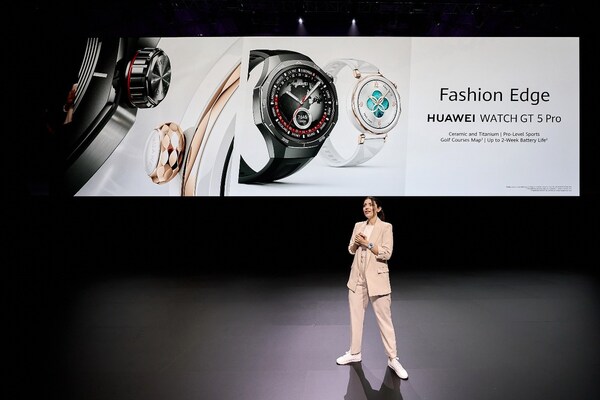One of the biggest mysteries of cancer is why it predominantly and almost exclusively targets people in middle age or older. During the first five decades of life, you’re twice as likely to die in a car crash than from cancer . But that changes abruptly at the half-century mark.
“90% of cancers come up after the age of 50,” says James DeGregori, Ph.D., the deputy director of the University of Colorado Cancer Center.

Why do our bodies suddenly stop being as effective in keeping cancer at bay after 50? There are theories — there’s more accumulated cell damage, our immune systems lose some of their luster — but there’s a new culprit that’s been driving cancer research in recent decades: Inflammation. Or rather, inflammaging, a “mash of inflammation and aging,” says Dr. Brian Brown, director of the Icahn Genomics Institute at Mount Sinai in Manhattan.
“It’s a newly appreciated factor in the aging process and one that contributes to the higher likelihood of developing cancer in older people.” Everything that science once believed about inflammation is changing, says Dr. Shilpa Ravella, an assistant professor of medicine at Columbia University Medical Center and author of “ A Silent Fire: The Story of Inflammation, Diet, and Disease” (W.
W. Norton, out now). “The relationship between inflammation and cancer is more complex than previously imagined,” she tells the Post.
“Inflammation is, in fact, one of the ‘hallmarks’ of cancer.” Inflammation, at its core, is a good thing. It’s part of the body’s immune response, and the reason we don’t die every time we get an infection.
“In a healthy situation, your immune system fights off the infection, eliminates the cancer cells, and the job is done,” says Brown. “And then it shuts itself off.” But that changes as we age.
“Particularly after the age of 40, our bodies have more difficulty dampening down the inflammation,” says Brown. “This is why older people got much sicker from COVID. It was not the virus that killed many older people.
It was the inflammation caused by the virus. They could not turn it off.” Inflammaging, or chronic inflammation, keeps the immune system in a heightened state of alert “so that it can’t spot and attack cancer cells as efficiently,” says Stephen Perrine, author of the new book “ The Full-Body Fat Fix: The Science-Based 7-Day Plan to Cool Inflammation, Heal Your Gut, and Build a Healthier, Leaner You !” (St.
Martin’s Press). “It’s like a fire company that has to keep answering false alarms.” White blood cells keep churning out cytokines, which leads to a constant state of inflammation, making it more difficult for the immune system to detect and attack cancer cells.
It’s still a relatively new theory, and still a controversial one according to Dr. Ian Neel, an associate professor of medicine at the University of California San Diego. “Is the inflammation a marker of chronic illness, or does it cause the chronic illness?” He asks.
“We have found lots of correlations through research of inflammation and various disease states, but these don’t always translate to causation.” In other words, the link between chronic inflammation and cancer is still open to debate. But Ravella claims this thinking is nothing short of “the biggest paradigm shift in the last couple of decades.
” Increasingly, she says, a growing body of research has indicated that inflammation, once thought to be just a consequence of disease, might actually be an independent cause of chronic diseases like cancer. “The relationship between inflammation and cancer is bidirectional,” she tells the Post. “Inflammation fuels cancer and cancer itself fuels even more inflammation.
” Whether inflammation is present in the body before or after a cancer diagnosis, it affects all life stages of cancer—part of what Ravella calls the “tumor microenvironment” — “from the early genetic changes that transform normal cells into malignant ones to the continued growth and spread of cancerous tissue throughout the body,” she says. Even low levels of inflammation, which doctors typically don’t test for, can promote cancer, says Ravella. So what to do about it? In the past, doctors have tried to treat diseases by shutting down inflammation entirely.
But that’s a bit like trying to fix police corruption by firing the entire police department. “Inflammation is part of a normal immune process,” says Brown. “Eliminating it would likely mean immunosuppressing someone, which we do not want to do because we need inflammatory processes to fight infections and even cancers.
What we want to do is just dampen down the overactive inflammation.” Some of that can be done with nutrition, like the “anti-inflammatory” diets endorsed by Perrine, which involve cutting out ultra-processed — or as he calls them, “predigested” — foods that boost inflammation and by eating a diverse mix of plant foods. “The wider the diversity of plants in your diet — at least 30 different species per week — the healthier your microbiome and the lower your inflammation,” Perrine tells the Post.
But diet alone isn’t enough, says Brown. “You can’t out-eat genetic predispositions and environmental triggers that contribute to inflammation.” Although it’s been widely claimed that all inflammation begins in the gut, inflammation can actually “start in any tissue,” Brown says.
“Your lungs getting infected with a virus can trigger inflammation there. Cholesterol building up in arteries can trigger inflammation in the vessels. A tumor growing in an organ like the pancreas will cause inflammation.
” A better solution is a healthy diet in tandem with the right medicine. Brown points to statins and LDL cholesterol (or “bad” cholesterol). “You could cut out all sources of LDL cholesterol from your diet, but your body can still make LDL,” he says.
“So taking a statin has benefits beyond diet.” The right drugs to combat inflammaging are still being investigated. There are currently ongoing trials for everything from silibinin — an extract from milk thistle with anti-inflammatory properties being explored by Italian researchers — to metformin, a drug for type 2 diabetes that could lower the risk of certain gastrointestinal cancers.
Rapamycin, a drug typically used in post-organ transplant care, has had encouraging results in experiments by German researchers, extending the life span of laboratory mice. But Dudley Lamming, an Associate Professor of Medicine at the University of Wisconsin-Madison who’s conducted his own research on rapamycin , tells The Post it’s too soon to get excited. “Suppressing the normal function of the immune system, which normally patrols for cancer, could actually cause an increase in cancer risk,” he says.
“There are a growing number of people taking rapamycin ‘off label’ for anti-aging purposes, but as of yet, there is no evidence that rapamycin can extend healthy aging in humans.” One of the most promising research involves macrophages, the “first responders” of white blood cells that are the best natural defense against cancer — and also, in the case of inflammaging, the body’s “Et tu, Brute?” betrayer. Brown tells the Post that macrophages have been the key to discovering the connection between inflammaging and cancer.
Macrophages, and their precursors the monocytes, are “one of the most important types of immune cells for clearing infections,” he says. “But they’re also a key mediator of inflammation.” Recent studies have found that cancers don’t just outsmart macrophages, they recruit them, producing chemicals that cause macrophages to suppress inflammation and promote tumor growth.
“In fact, some cancers have more macrophages than cancer cells,” Brown says. Finding ways to control and redirect macrophages will have “a profound impact on cancer and potentially even aging,” he says. Dr.
Yara Abdou, an assistant professor of oncology at the University of North Carolina, has been trying to do exactly that. In ongoing research with her colleague, Dr. Michael Klichinsky, she’s been exploring ways to “trick macrophages into thinking that cancer cells are foreign invaders,” she tells The Post.
They do this by introducing receptors engineered to recognize specific cancer targets. When the engineered macrophages come in contact with the cancerous cell, “they react the same way they would when coming in contact with a bacteria,” says Abdou. “They eat the cancer cell, kill it, and induce inflammation in the tumor — in this case, a very good thing.
We use a patient’s own immune cells to attack their own cancer.” Although their research is still early in the Phase I trials , the results have been “very promising,” says Abdou. “We’ve shown that we can make the engineered cells from patients with very advanced cancers.
We’ve seen some lesions shrink after a single dose of CAR macrophages.” And while their research has focused on patients with breast, ovarian, and esophageal cancer, it could expand to include other cancers. “One of the beautiful aspects of this technology is that it’s a plug-and-play system,” says Abdou.
Cancer is just the beginning. “A clear connection has emerged between aging and inflammation,” says Brown. And discovering how inflammaging plays a role in disease won’t just lead to a cure for cancer, but possibly cures for heart disease, Alzheimer’s and arthritis.
“There’s an urgency to understand why we become hyper-inflamed as we age, and how we can safely reduce this inflammaging without causing immune suppression,” says Brown. “We’re getting closer to solving this and it’s going to help us live healthier lives.”.



















